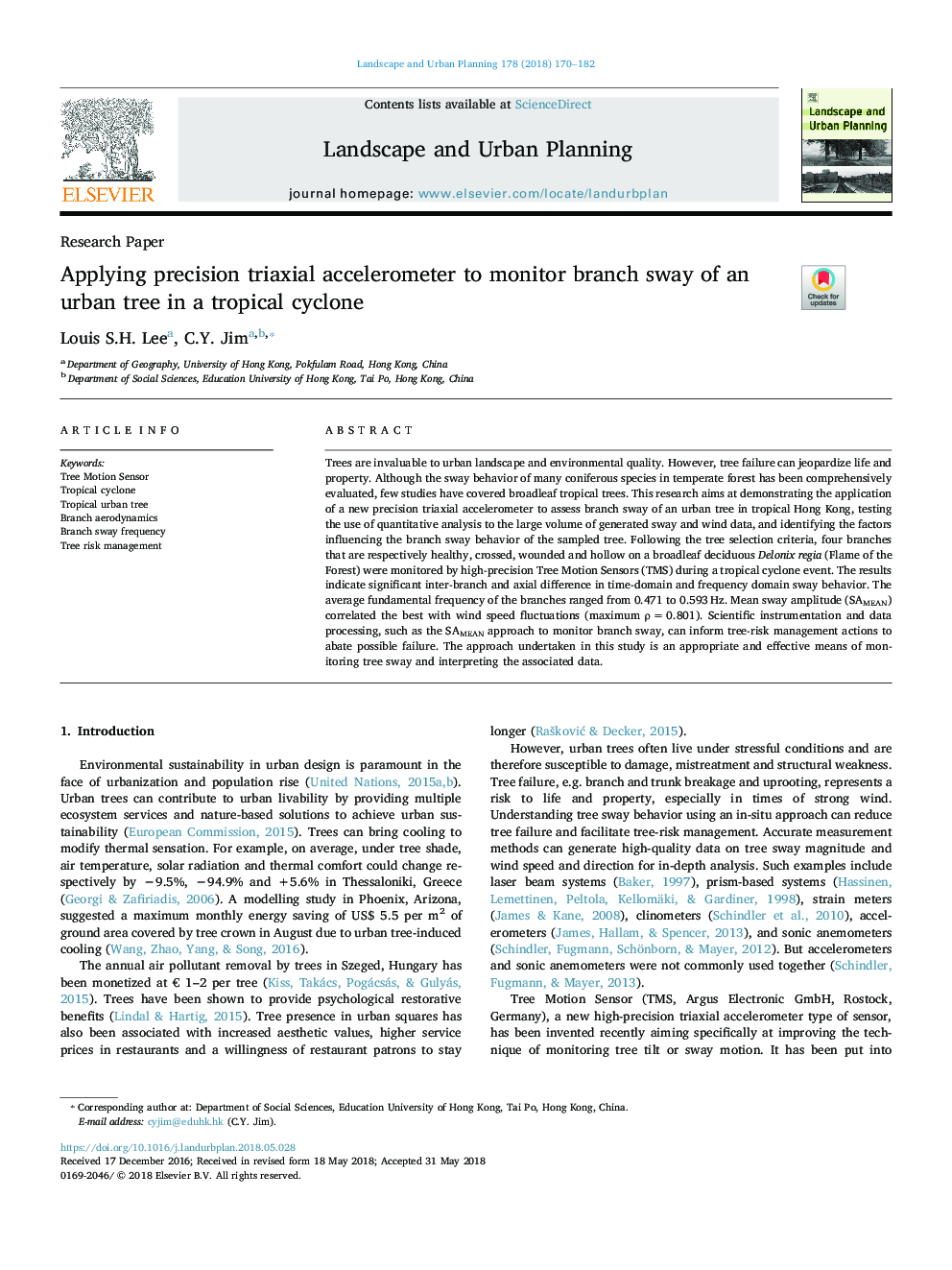| Article ID | Journal | Published Year | Pages | File Type |
|---|---|---|---|---|
| 7459574 | Landscape and Urban Planning | 2018 | 13 Pages |
Abstract
Trees are invaluable to urban landscape and environmental quality. However, tree failure can jeopardize life and property. Although the sway behavior of many coniferous species in temperate forest has been comprehensively evaluated, few studies have covered broadleaf tropical trees. This research aims at demonstrating the application of a new precision triaxial accelerometer to assess branch sway of an urban tree in tropical Hong Kong, testing the use of quantitative analysis to the large volume of generated sway and wind data, and identifying the factors influencing the branch sway behavior of the sampled tree. Following the tree selection criteria, four branches that are respectively healthy, crossed, wounded and hollow on a broadleaf deciduous Delonix regia (Flame of the Forest) were monitored by high-precision Tree Motion Sensors (TMS) during a tropical cyclone event. The results indicate significant inter-branch and axial difference in time-domain and frequency domain sway behavior. The average fundamental frequency of the branches ranged from 0.471 to 0.593â¯Hz. Mean sway amplitude (SAMEAN) correlated the best with wind speed fluctuations (maximum Ïâ¯=â¯0.801). Scientific instrumentation and data processing, such as the SAMEAN approach to monitor branch sway, can inform tree-risk management actions to abate possible failure. The approach undertaken in this study is an appropriate and effective means of monitoring tree sway and interpreting the associated data.
Keywords
Related Topics
Life Sciences
Agricultural and Biological Sciences
Ecology, Evolution, Behavior and Systematics
Authors
Louis S.H. Lee, C.Y. Jim,
